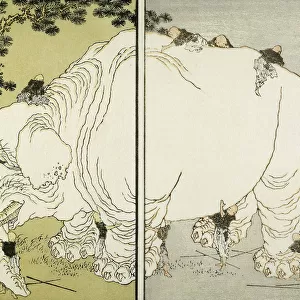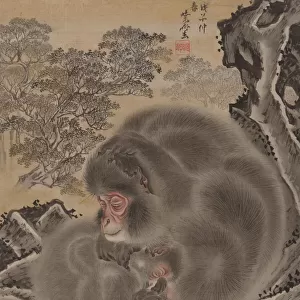Home > Europe > United Kingdom > England > Cleveland
Plums, Bamboo, and Orchid, 1834. Creator: Yamamoto Baiitsu (Japanese, 1783-1856)
![]()

Wall Art and Photo Gifts from Heritage Images
Plums, Bamboo, and Orchid, 1834. Creator: Yamamoto Baiitsu (Japanese, 1783-1856)
Plums, Bamboo, and Orchid, 1834. In Japan, the literati painter Yamamoto Baiitsu loved the plum and even changed his name to include the word plum. Here he created a dynamic composition to show the energy of the late Edo period. The plum, bamboo, and orchid derive from the motif of the Four Gentlemen, also called the Four Noble Ones or Four Friends. The term compares four plants--the plum blossom, bamboo, orchid, and chrysanthemum--to Confucian scholar- junzi, or " gentlemen." Four Gentlemen also refers to a painting or decoration incorporating all the plants, which are typically depicted in traditional ink paintings
Heritage Images features heritage image collections
Media ID 19623882
© Heritage Art/Heritage Images
1615 1868 Hanging Scroll Ink On Silk Yamamoto Baiitsu
EDITORS COMMENTS
This print titled "Plums, Bamboo, and Orchid" by Yamamoto Baiitsu showcases the artist's deep admiration for plum blossoms. In fact, he was so enamored with this delicate flower that he incorporated it into his name. Baiitsu skillfully captures the essence of the late Edo period through a dynamic composition that exudes energy. The painting draws inspiration from the Four Gentlemen motif, also known as the Four Noble Ones or Four Friends. This concept compares four plants - plum blossom, bamboo, orchid, and chrysanthemum - to Confucian scholar-junzi or "gentlemen". These plants symbolize different virtues such as resilience (bamboo), elegance (orchid), and purity (plum blossom). Baiitsu's ink on silk masterpiece beautifully combines these elements in a traditional hanging scroll format. The meticulous brushwork brings each plant to life while maintaining a sense of harmony within the composition. Displayed at The Cleveland Museum of Art, this artwork is an exquisite example of Japanese heritage art from the Edo period (1615-1868). It serves as a testament to Baiitsu's artistic prowess and his ability to capture nature's beauty through ink painting. Heritage Art/Heritage Images has expertly preserved this remarkable piece of Japanese culture in their print collection. By showcasing this image without commercial intent, they allow viewers to appreciate Baiitsu's talent and immerse themselves in Japan's rich artistic history.
MADE IN AUSTRALIA
Safe Shipping with 30 Day Money Back Guarantee
FREE PERSONALISATION*
We are proud to offer a range of customisation features including Personalised Captions, Color Filters and Picture Zoom Tools
SECURE PAYMENTS
We happily accept a wide range of payment options so you can pay for the things you need in the way that is most convenient for you
* Options may vary by product and licensing agreement. Zoomed Pictures can be adjusted in the Cart.




